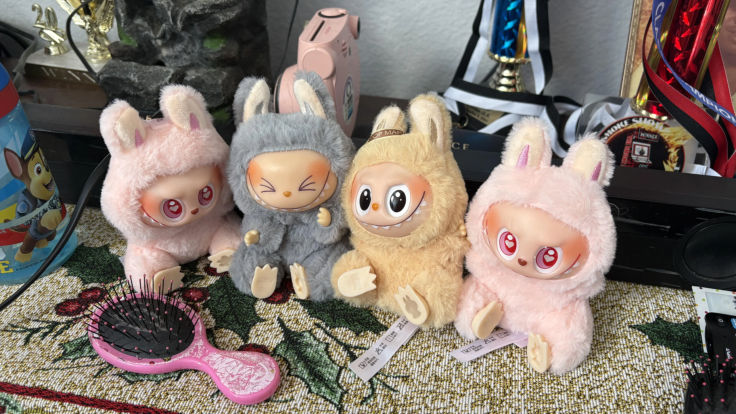Labubu or Lafufu? How to Spot a Fake as Knockoff Dolls Flood Online Marketplaces
Some Labubu fans are choosing to buy the plush bag-charm's counterfeit cousin.

If you've been keeping an eye on the latest must-have collectibles in pop culture, you may have found yourself the proud owner of one of Popmart's viral Labubu dolls. But here's the burning question: is your Labubu the real deal?
Knockoff versions of these wildly popular monster bag charms are flooding online marketplaces, leaving fans worried that their prized toy might be a fake.
Labubus—those mischievous, elf-like plush monsters—shot to fame after stars like Dua Lipa and Rihanna were spotted with them, and TikTok unboxings helped fuel the frenzy. But with counterfeit versions, dubbed 'Lafufus', now in circulation, here's how to tell the difference—and whether going faux is worth it.
Labubu vs Lafufu: What's the Difference?
If the names 'Labubu' and 'Lafufu' are giving you whiplash, you're not alone. Here's a simple breakdown.
Labubu, the original, was first introduced in Kasing Lung's children's book series The Monsters. Chinese retailer Popmart licensed the character, turning it into a line of collectible bag-charm dolls.
With features like crocodile teeth and oversized eyes, Labubu's gender is often assumed to be ambiguous, although fans of the books assert she is a girl.
In 2019, Popmart began selling Labubus in blind boxes, meaning customers didn't know which edition they were getting until they opened the packaging. With one in every 72 boxes holding an ultra-rare figure, the Labubu craze took off—especially on TikTok, where collectors shared their unboxing experiences.
Blind boxes retail for between £10 and £20, but rare editions can fetch up to £5,200 on resale sites. It's on these resale platforms—like AliExpress, eBay and Temu—where Lafufus, the counterfeits, are most often found.
How To Spot A Lafufu From A Mile Away
After Labubus were reportedly pulled from UK shelves due to in-store fights, collectors turned to online marketplaces—making it crucial to know how to spot a fake.
According to fan-run blog Labubu World, there are four major tells that indicate a Lafufu instead of an authentic Labubu:
- Packaging: Genuine Labubus come in Popmart-branded boxes with scannable QR codes. Lafufus, on the other hand, are usually stuffed into flimsy, unbranded bags.
- Details: Authentic dolls have finer details—like hands, blush and UV foot markings—that are often poorly replicated or missing on Lafufus.
- Quality: While even genuine Labubus may have small imperfections, Lafufus tend to feature glaring issues like wobbly limbs, uneven fur, or discoloured facial features.
- Price: If you find a Labubu listed for under £10, it's almost certainly a Lafufu. Expect to pay at least £25 for the real thing.
Should You Buy A Lafufu?
Despite being knockoffs, Lafufus are gaining a fan base of their own.
Firstly, they're far more affordable. For collectors priced out of the skyrocketing Labubu resale market, Lafufus offer a budget-friendly alternative.
Secondly, many buyers use Lafufus as a creative outlet. These dolls become DIY canvases for enthusiasts who repaint them, trim their fur, and craft custom outfits—creating unique, personalised pieces.
For those who don't mind skipping the official branding, Lafufus offer a way to join the fandom and express creativity without splashing out.
However, Labubu World does caution against dodgy sellers who attempt to pass Lafufus off as genuine Labubus. Without proper research, buyers may receive poorly made dolls far below even knockoff standards.
As long as you vet your sellers, stick to reputable platforms, and approach deals with caution, opting for a Lafufu isn't just a compromise—it can be a smart and creative choice for collectors on a budget.
© Copyright IBTimes 2025. All rights reserved.






















